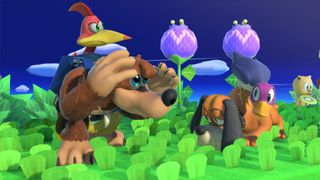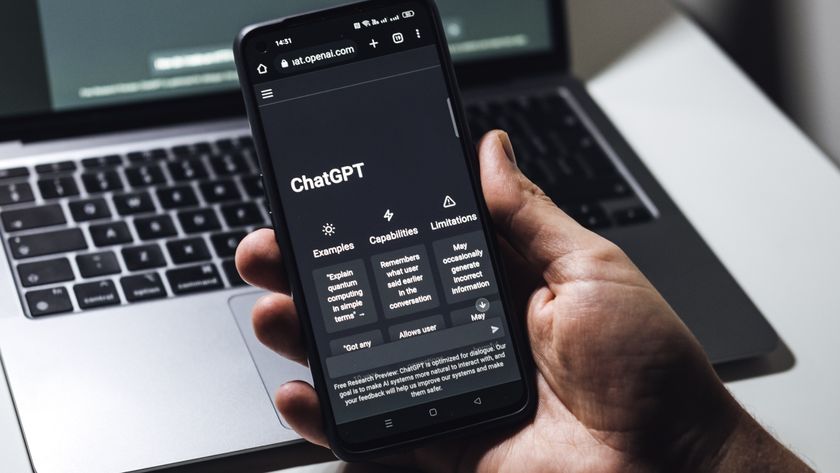
Old-school Nintendo 64 fans went nuts when Nintendo unveiled that Banjo & Kazooie would be coming to Super Smash Bros. Ultimate in the form of DLC. The character, which actually first made its debut in Diddy Kong Racing in 1997, is most well known for 1998’s Banjo-Kazooie. Eventually Rare, the company that created Banjo, was purchased by Microsoft, making the character an exclusive IP aligned with Xbox. Luckily, Microsoft gave Nintendo the blessing to bring Banjo & Kazooie to Smash.
With the history lesson out of the way, let’s jump into this dynamic new character.
Is Banjo & Kazooie any good?
The short answer is yes, Banjo & Kazooie is a solid character. I see Banjo as a faster, more dynamic version of Donkey Kong. While that may not be the best praise, given that Donkey Kong sits lower on many tier lists, there’s enough differentiation that makes Banjo a top contender.
Here are the goods: Banjo is a heavyweight at 106, but is relatively fast thanks to its dash, called talon trot. Banjo also has great recovery, and can traverse a large horizontal and vertical distances. Damage is also solid, with a suite of powerful moves that come out quickly enough.

Here are the not so goods: Many of Banjo’s moves are either too situation specific or don’t deal enough damage. Unlike with Hero, where just about every move had some use-case, Banjo players are largely going to stick to a suite of specific moves for most damage. Everything else will be secondary. But this isn’t necessarily a bad thing. Most characters in Smash only have a few good moves while everything else is just okay.
So, should you main Banjo & Kazooie? Maybe. Banjo & Kazooie isn’t a bad character, and is way more usable than Piranha Plant, but isn’t exceptional either. If you’ve been looking for a heavyweight character that’s decently nimble, then Banjo is a solid option. There are better options however, like Snake. It’s still hard to say where Banjo will end up on the tier list, but it won’t be at the top. He'll probably land closer to mid-to-high.
Wonderwing
Banjo’s most insane move is the side-b special, Wonderwing. This move, when executed from up-close, does 26.4% damage. Those are ridiculous numbers, and can kill heavies at low percentages. It has plenty of super armor and is nearly invincible once the animation gets going. It also has enough range to fly across most stages.
Sign up to get the BEST of Tom's Guide direct to your inbox.
Get instant access to breaking news, the hottest reviews, great deals and helpful tips.
There are a few downsides however. The move can only be used five times per stock. There are five little feather logos that appear when used. Keep track and make sure you have at least one feather, or you’ll be out of luck. It also has a slow animation startup, so it can be easily seen by the opponent.
The best way to execute this move is up-close, when your opponent has little time to react. It’s best if you can pair it with a combo that leaves your opponent in hit-stun.
The most obvious combo is with a grab-down, which will dig your opponent into the ground, and a quick wonderwing before they can jump out. This combo does around 39% damage, more than enough to kill.
Another great way to combo into Wonderwing is to use Banjo’s down-b special, a football shaped bomb. Rear egg is a quick-to-explode bomb that Kazooie can throw out. It can also be grabbed. Regardless of if you grab and throw rear egg at your opponent, or if it hits them normally, it leaves enough hitstun and launches your opponent high enough for a jump into wonderwing. The accuracy will take some getting used to.
Recovery quirks

Knowing how to recover with Banjo will be critical to the viability of this character. Banjo has unique jumping and recovery options. First, Banjo has a total of three jumps from neutral. After performing any number of jumps, Banjo’s up-b move, shock spring jump, launches them upward. Unfortunately, shock spring jump cannot be angled. But shock spring jump can be charged for longer to give slightly better height.
But the piѐce de résistance is Banjo’s ability to do an extra jump right after his up-b. You’ll need to press the jump button quickly, because if you wait too long it won’t activate. And this extra jump only works only if you’ve saved one of his three jumps prior. Lastly, if you’re still an inch short of grabbing the ledge, Banjo can still directionally air-dodge after his up-b.
It’s also possible to use one of your Wonderwings to recover as well. If you’re far enough off stage, use Wonderwing to traverse a larger horizontal distance, then use Banjo’s jumps and Shock Spring Jump to get back on stage.
Fair fiesta
Banjo’s best aerial move is forward-air (fair). This is executed by, as the name suggests, pressing forward and attack while in the air. The best way I like to execute this is with the c-stick. So I’ll jump, and then quickly hit right on the c-stick to implement this move. Banjo’s fair does a whopping 15% damage. It also has a decent amount of knock-back giving you the opportunity to run up and do another one. This is a potential kill move for Banjo, and should be both practiced and perfected.
The move does have a decently long animation, but given Banjo’s relatively high short-hop, it can still be easily be coupled with the c-stick. You’ll just need to be fast on execution.
Edge Guarding

Rear egg is probably the best tool you can use to pressure your opponents as they try and recover on the edge. You can only throw out one rear egg at a time, so predict your opponent’s recovery. Likely, your opponent will grab the ledge and have a few invincibility frames, making the rear egg moot. But it can still corner them and prevent them from wanting to get back on stage. While they’re hanging on the ledge waiting for the grenade to go off, this is a perfect chance for you to jump off stage and hit them with a forward-air (fair) or bair.
Beak Buster
Along with fair, one of the better combo tools is down-air (dair). Beak Buster is a quick downward plummet by Kazooie that hits the opponent like a rocket. It needs some accuracy, but does enough forward knock-back that you can run after your opponent and land a satisfying fair.
Rear Egg
Pressing down-b will have Kazooie throw out a football shaped bomb. This bomb is great for comboing and pressure. While the bomb does hurt you as well, it’s good to throw it out if you’re not facing your opponent. For example, if you’re facing away from your opponent, you could use a quick back-air (bair) and do little damage. Or you could use a quick rear-egg, which when after it explodes, you can jump up and do a bair then. Or better yet, a fair.
Combo starters and other thoughts

The rest of Banjo’s repertoire isn’t anything to write home about. But there are a few good combo starters. Banjo’s up-air, while low on damage, has good range, and is wide enough to follow your opponents and hit them as they fall back on to the stage.
Grabs have good range for Banjo, and at the very least, a grab-down can combo into a wonderwing.
Beak barge, or down-tilt (press down and attack while on the ground) flings your opponent far to the side. This is great as a ledge poke, and with Banjo’s dash speed, can combo into a dash attack.
Weirdly, up-tilt (slightly tilt the stick up while on the ground and attack) does great damage. It’s very situational, as it works best when the opponent is right above you. But it really packs a wallop, much more than up-smash or up-air.
Attacks to not invest in are down-smash and side-smash. Both don’t do a ton of damage and lack the umph for a kill. Neutral-air (nair) is also middling and doesn’t really set up for many combos. It has no knockback and at most can combo to any neutral move.
Final thoughts

Like I mentioned at the beginning of this guide, Banjo & Kazooie isn’t a bad character. There are better characters however. If you’re really a fan of this Nintendo 64 staple, then yeah, invest the time to really master the duo. But if you can’t be bothered to put in all the work to discover new combos, sticking to a character like Snake will get your further much faster.
Imad is currently Senior Google and Internet Culture reporter for CNET, but until recently was News Editor at Tom's Guide. Hailing from Texas, Imad started his journalism career in 2013 and has amassed bylines with the New York Times, the Washington Post, ESPN, Wired and Men's Health Magazine, among others. Outside of work, you can find him sitting blankly in front of a Word document trying desperately to write the first pages of a new book.













